Since you’re here on Atomic-Ranch.com and you clicked on an article about furniture restoration, I’m willing to hedge my bets that you would agree with me on one or more of the following:
- You adore the gorgeous grain of original MCM-era wood furniture.
- There’s one or more prized pieces of MCM furniture in your home.
- The thought of an “upcycled” Kent Coffey credenza with a Shabby Chic paint job leaves you feeling ill.
- You’ve gotten sentimental over a piece that’s unfortunately in less-than-stellar condition.
If you answered YES to any or all of the above, I know a man you need to meet. Bob Kennedy and his wife, Amanda, own and operate the vintage store and furniture restoration workshop, Atomic Age Modern in Mesa, Arizona. I first encountered the couple in the Facebook Group they moderate called The Mid Century Modern Furniture Refinishing Resource. The group is a lively and informative community of MCM purists who show off their amazing Mid Century Modern furniture transformations, share tricks of the refinishing trade and can ask each other for help solving problems that Google simply can’t answer.
Bob is generous with his wisdom, and he’s graciously offered a wealth of information in the interview below to help us novices avoid typical vintage Mid Century Modern furniture refinishing pitfalls and tackle our own transformations.
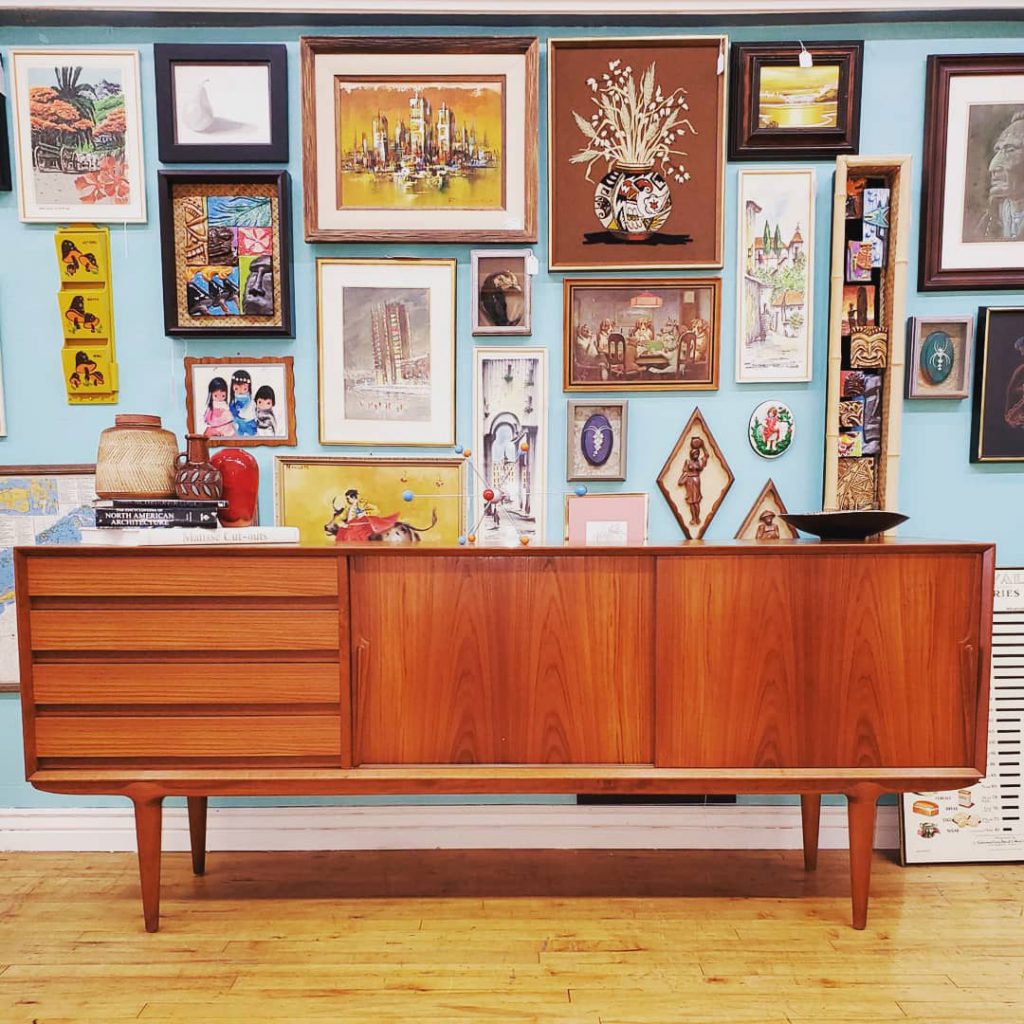
Q: Hi Bob! Can you introduce yourself, and tell us a bit about your business and the groups you run?
A: Hello! I, along with my wife Amanda, own Atomic Age Modern in Mesa, Arizona. We sell mid century goods and eclectic vintage finds. We also offer professional furniture repair, refinishing and restoration. We’ve been selling mid century goods in some capacity for years, and took the leap of opening a brick and mortar store nearly 2 years ago.
I have had my furniture restoration business for roughly 5 years. Prior to that, I worked for a few local antique and fine furniture restoration shops for many years. It was during that time that I apprenticed under two highly respected master finishers, who taught me the trade. I have also created two very successful Facebook groups that focus on furniture restoration.
The Mid Century Modern Furniture Refinishing Resource is the premier group dealing specifically with Mid Century Modern furniture repair, refinishing and restoration. It is free to join and we currently have 12k + members and growing! The second group, Furniture Refinishing 101 with Bob Kennedy, is a unique subscription group where I offer one on one assistance to members. This group has proven to be extremely useful to resellers, as it helps them maintain a decent profit margin because they can avoid sending pieces out to be restored. In addition, they are learning proper finishing skills and techniques to be able to offer their customers a better product.
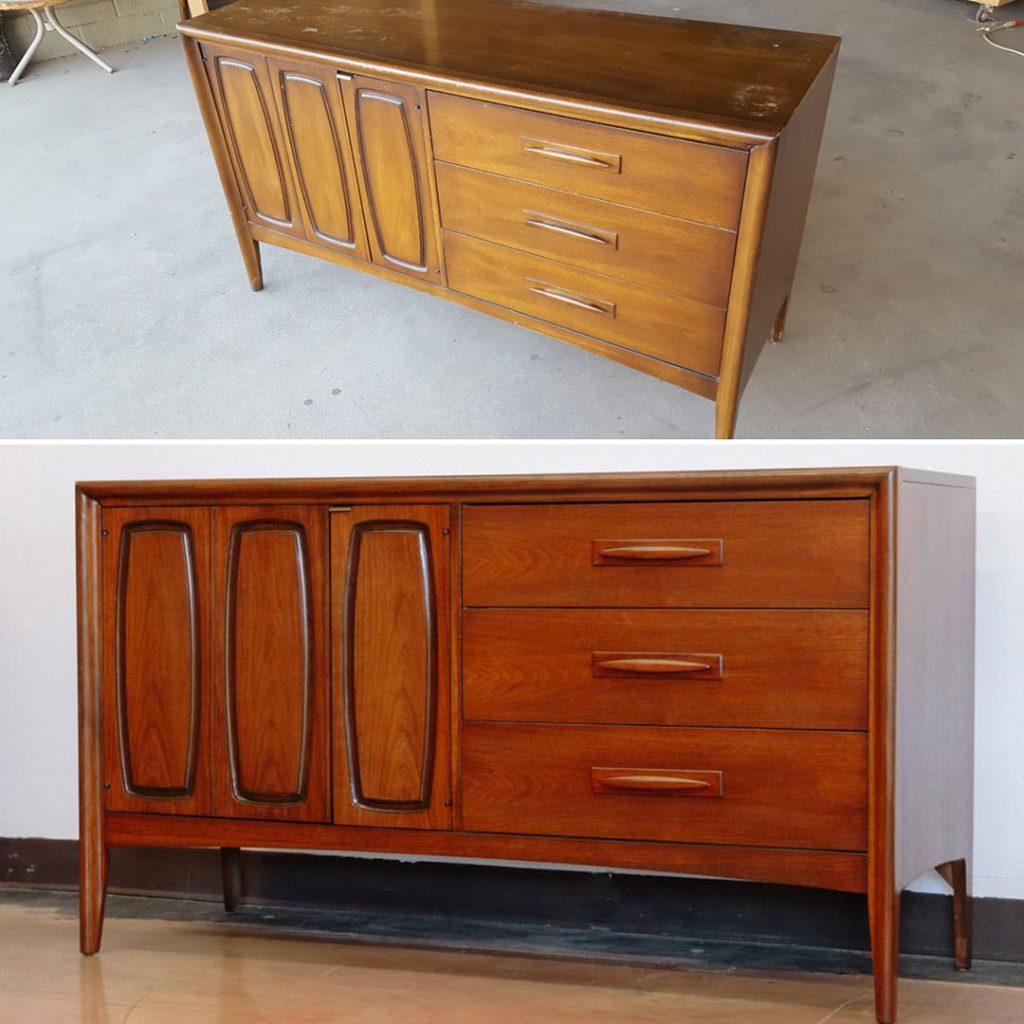
Q: Your shop and your work focuses on MCM. What do you love about Mid Century Modern design in general, the furniture specifically, and the era?
A: I loved Mid Century Modern design long before I knew it was a thing! My grandmother’s home was like a modern time capsule from 1957, and from a very young age I was enamored with all of that “old stuff” in her home. The bright colors, the textures, the fun designs. I love the optimism and forward thinking that “modern” or “space age” furnishings signified at the time. The lines are clean, simple and un-cluttered. Some call it utilitarian, I call it timeless. The woods used, mostly walnut and teak, are naturally beautiful and durable.
Furniture construction changed significantly in the mid century. Hand constructed, solid wood pieces gave way to mass-produced, mostly veneered pieces. A better way to put long-lasting, well-made furniture into the homes of the common masses.
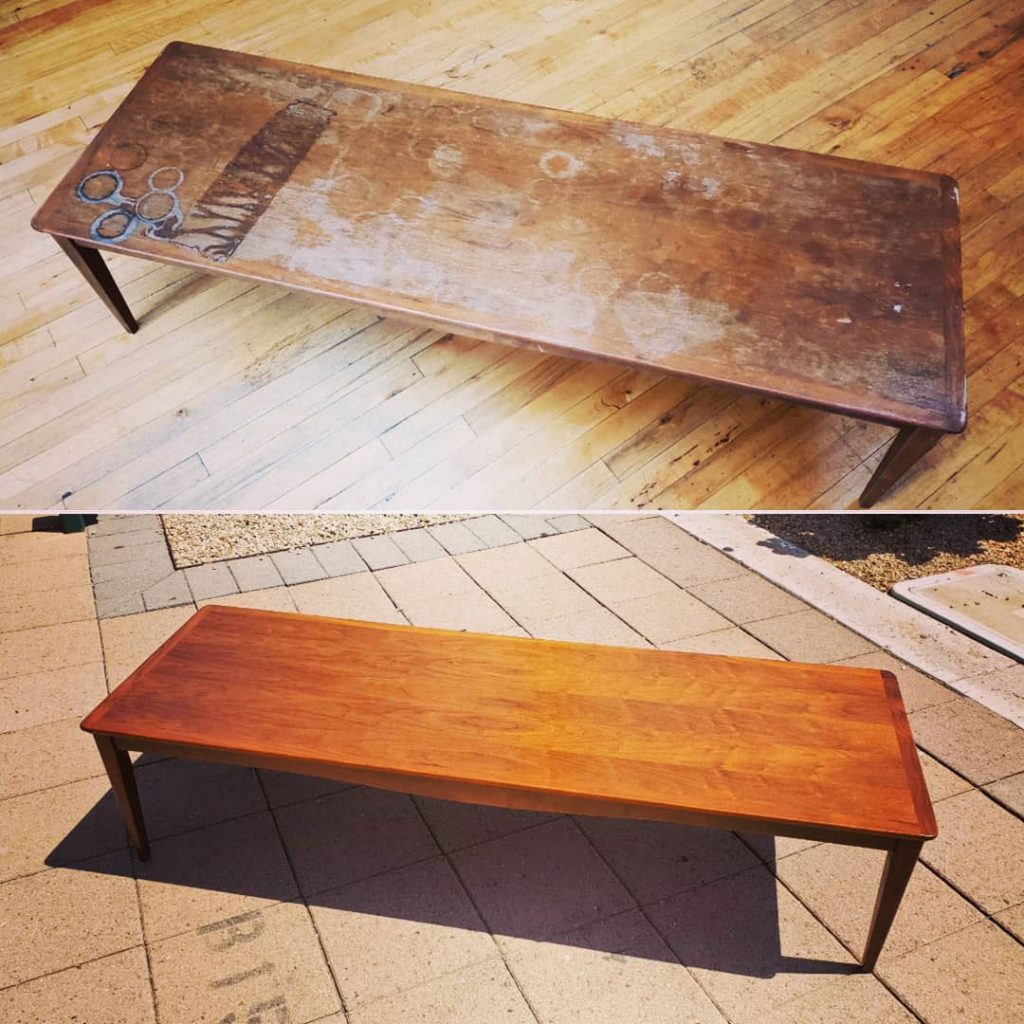
Q: What problems do you frequently see in furniture that you refinish?
A: Issues that I frequently see with mid century furniture are almost always caused by inappropriate—or lack of—care. Lacquer finishes that have failed due to spilled chemicals such as nail polish remover, using products containing oils or silicone on furniture, getting furniture wet, etc. Quite possibly the worst things I see are pieces that an inexperienced person has tried to refinish.
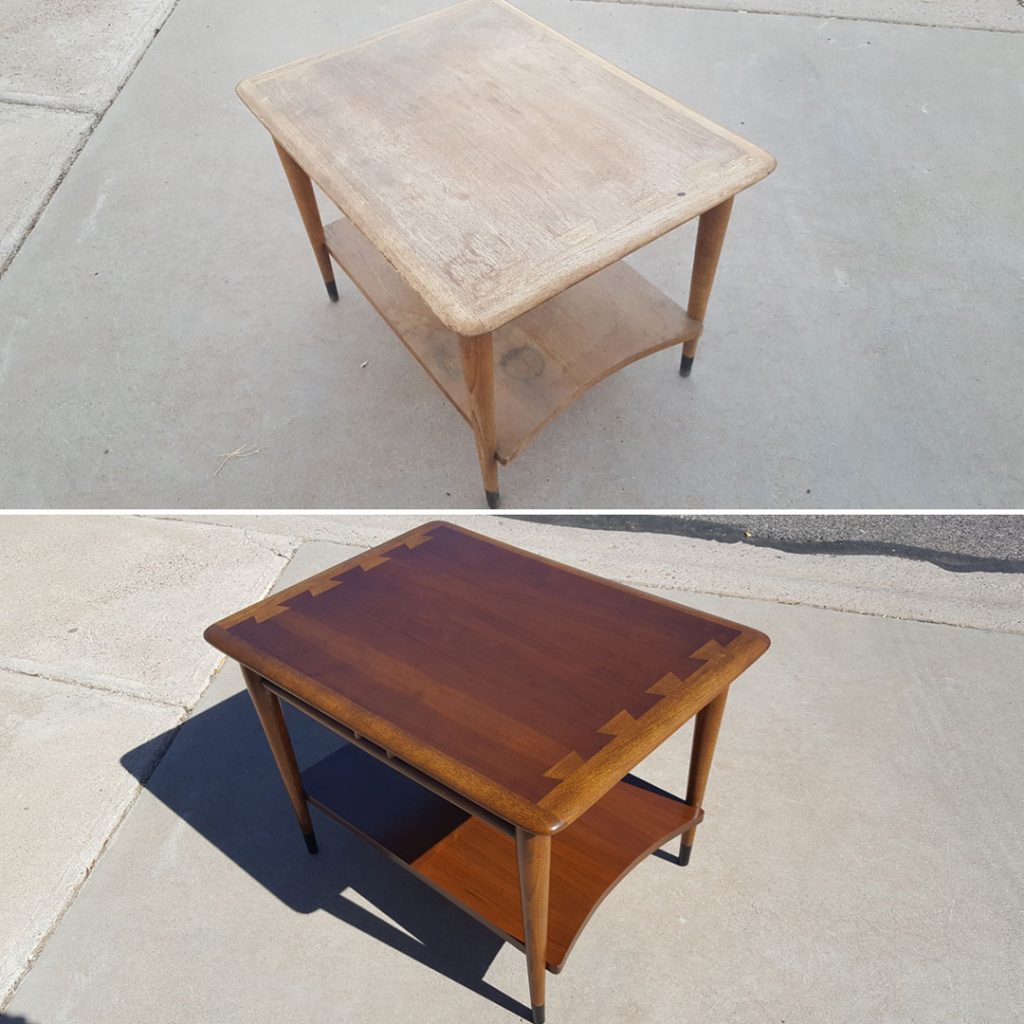
Q: What are some rookie mistakes you commonly see beginners making when they try a DIY restoration?
A: Some common, amateur mistakes I see are people using consumer (home store) products, sanding through veneer, using foaming glue, using home remedies such as mayonnaise on their furniture, using oil or polyurethane as a finish.
Most mistakenly assume that all mid century furniture was finished with teak oil or Danish oil. That couldn’t be further from the truth. About 98% of all mass-produced American furniture was finished with sprayed, toned lacquer. There are very few exceptions to this.
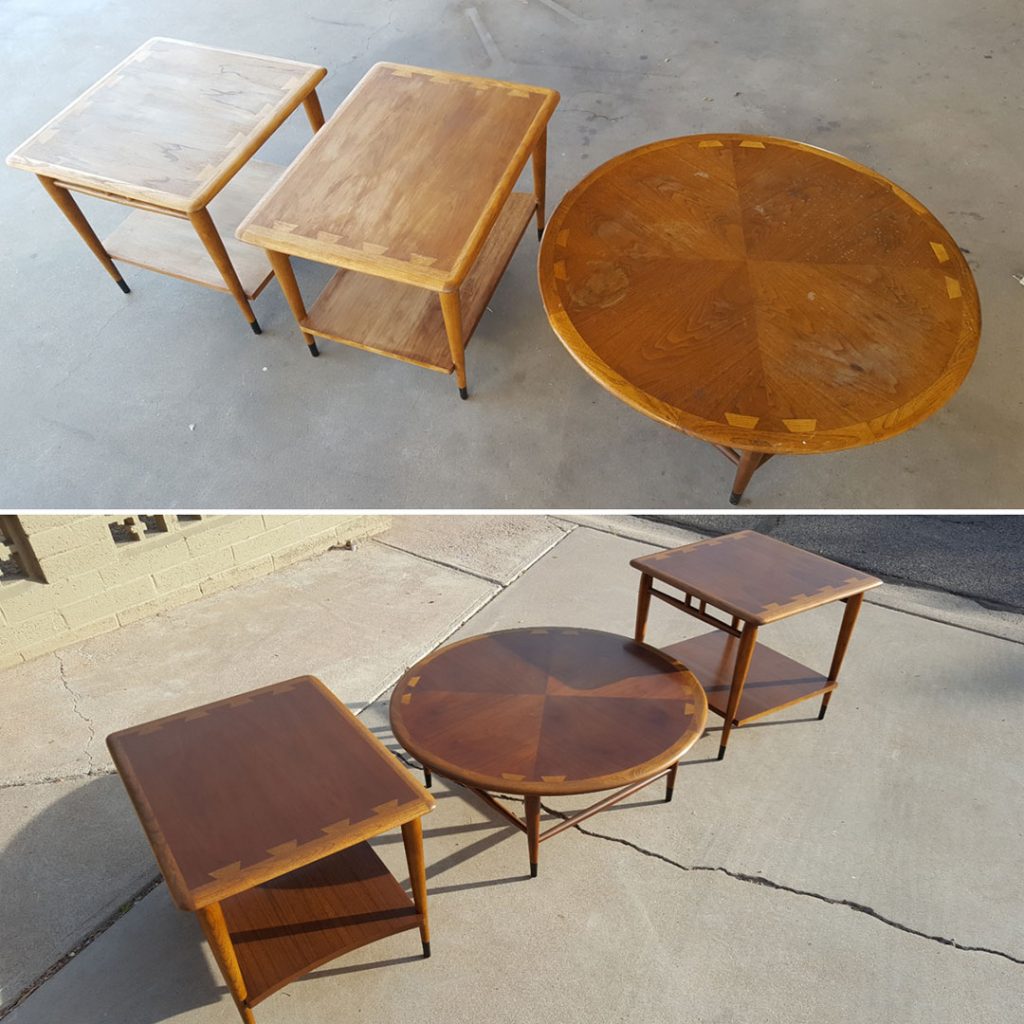
These pieces can be stripped, sanded and finished with oil, but they will not look the same due to dissimilar woods used in construction. A great example is Lane Acclaim. I’m sure we’ve all seen Acclaim pieces that some well-intentioned weekend warrior has sanded and “refinished” with Danish oil. The contrast between the different woods becomes stark and wrong. Not to mention that oils offer little protection.
A great finish for the home user is toners and pre-catalyzed lacquer. These are commercial coatings and are available in aerosol cans from commercial paint stores or online. As for Danish pieces, nearly everyone assumes these were all finished with “teak oil”. That’s just not the case. While some of the higher-end pieces were finished with some type of oil, most mass-produced pieces were finished with sprayed conversion varnish, which is quite durable. Conversion varnish requires expensive spray equipment and specific mixing requirements, making it a poor choice for the home user. A good alternative finish for these Danish pieces is matte pre-catalyzed lacquer.
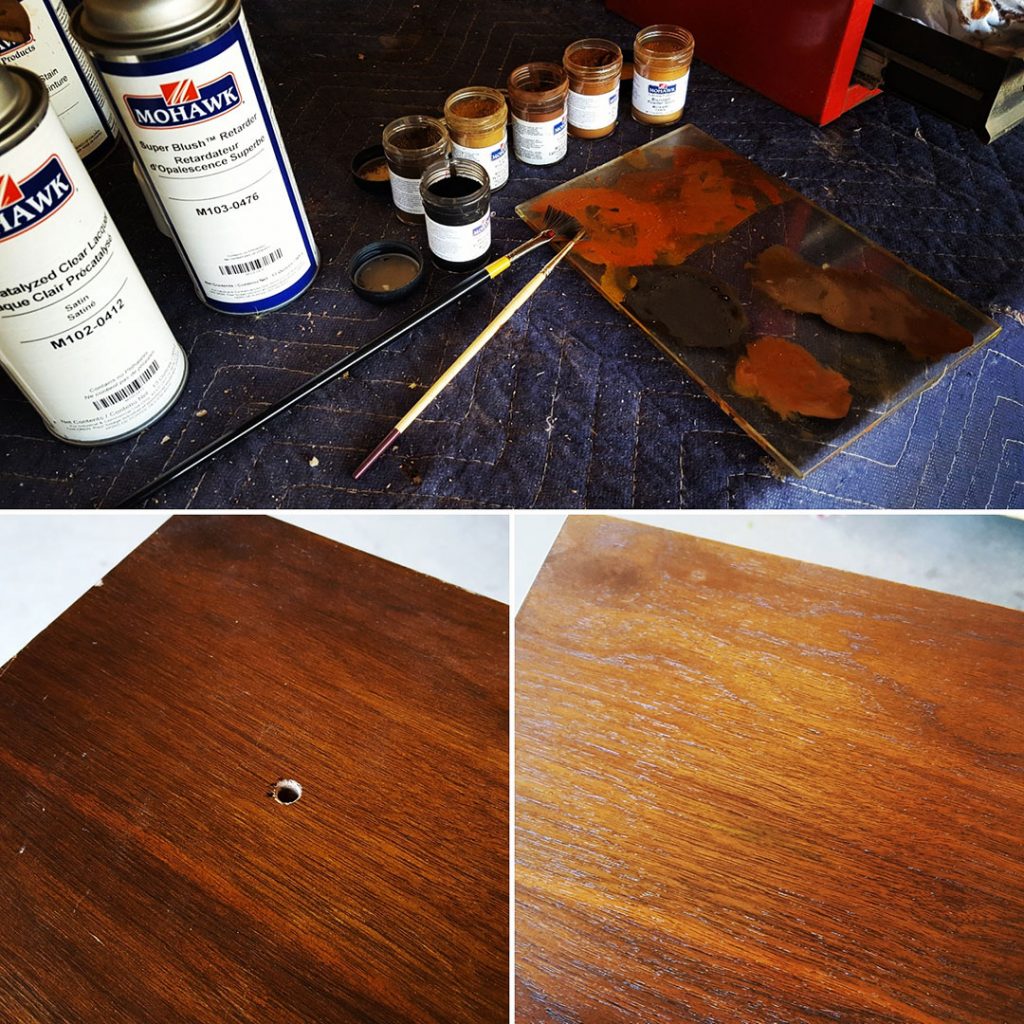
Q: When should the average joe opt to send their piece to a professional, instead of trying a DIY job?
A: While achieving a good finish is relatively easy if the correct process and products are used, there are some instances when the average home finisher will want to send it to the pros. Things like structural repairs and veneer repairs are best left to professionals.
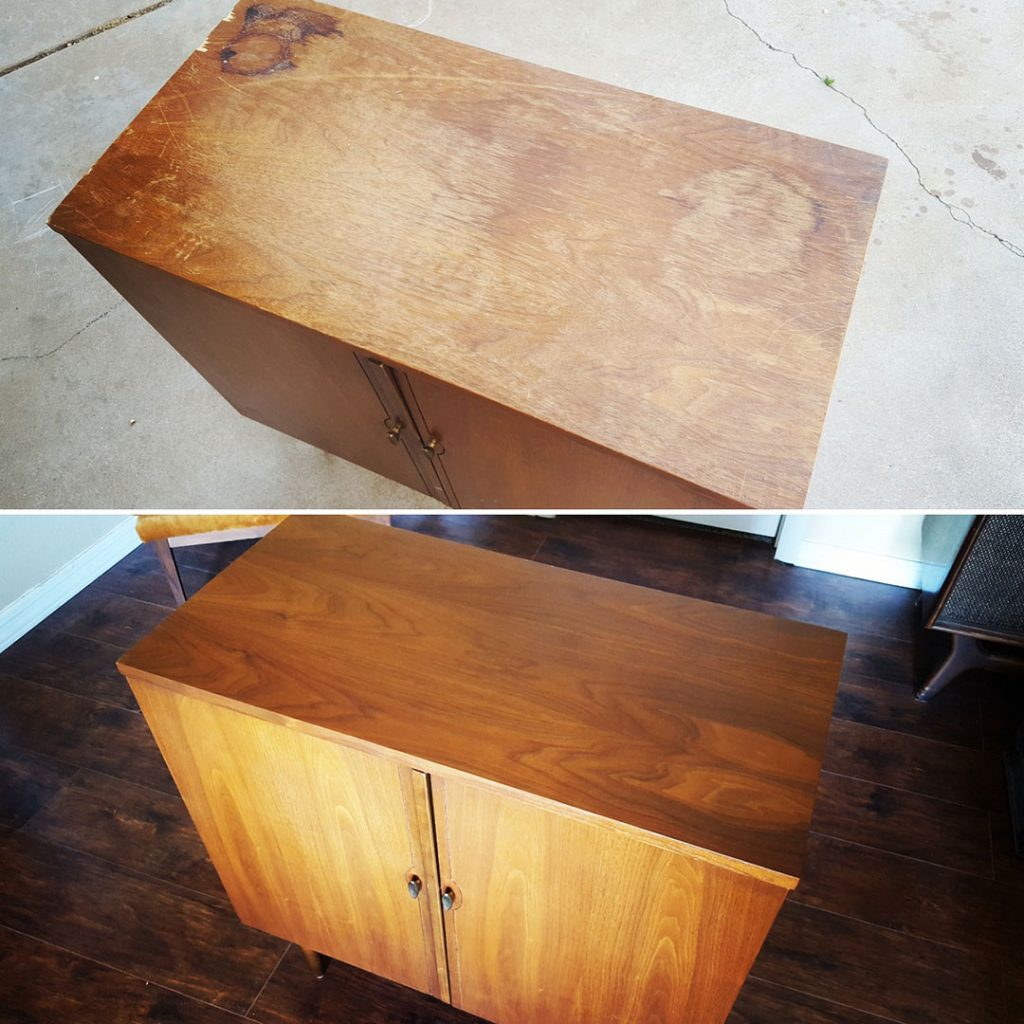
I do teach those types of repairs in my subscription group, but they’re a learned skill that require an investment in special tools and products. If you find a great deal on a rare piece (especially Danish) that has a swollen area or bubbles on the top, pass on it. Those are pretty much too far gone and cannot be repaired. That type of damage is caused by the substrate, which is often particle board, getting wet.
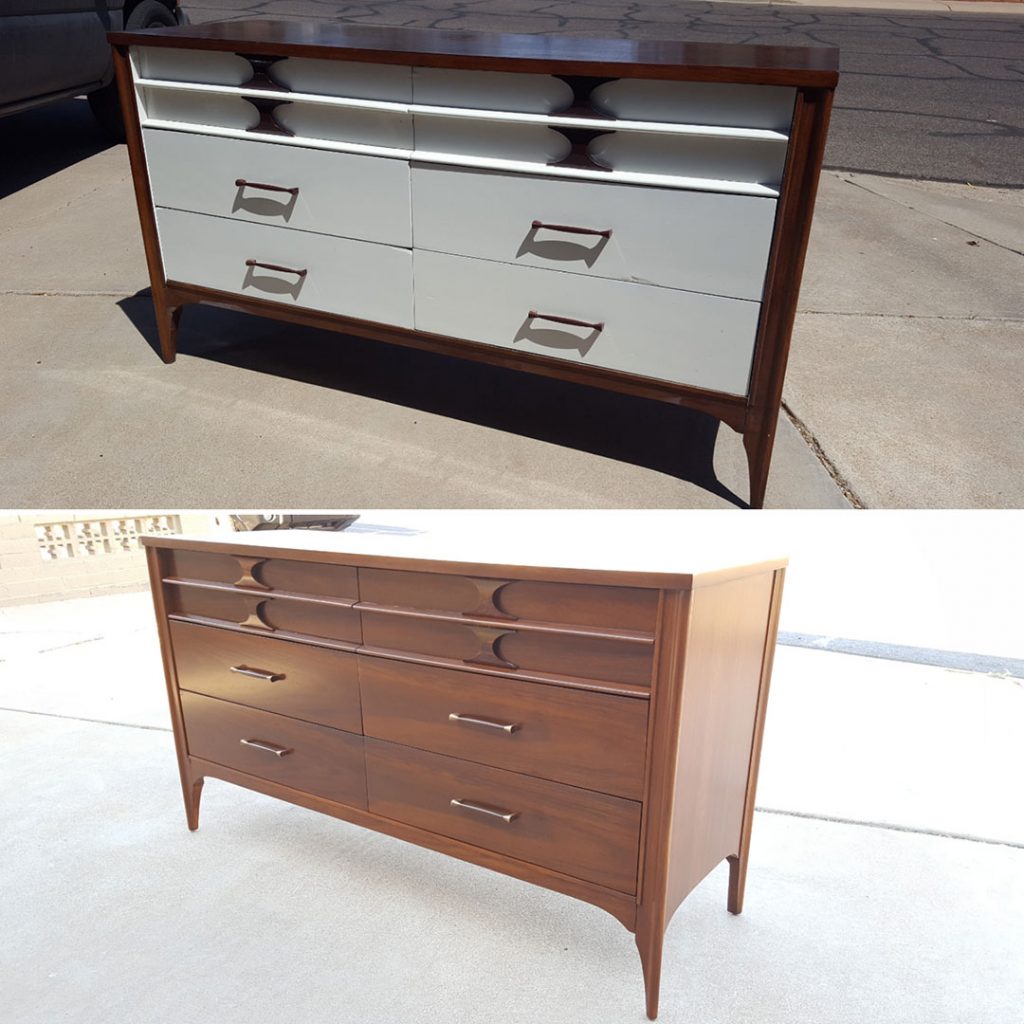
Q: When (if ever) is it ok to paint a piece of MCM furniture?
A: Painted furniture. Those two words send chills up many modernists spines! When someone paints a nice Mid Century Modern piece, they usually qualify it by saying something like “it was too far gone.” In most cases, the issues can all be corrected. Burns, sand-throughs, scratches, gouges, stains, chipped/missing veneer can all be repaired.
In general, I don’t have too much of a problem with painting furniture as long as it’s done tastefully and correctly. The problem comes when people don’t know how to do it correctly. Brushing on chalk paint is a terrible idea. It doesn’t look good and it’s not durable. Spray paint from a home improvement store is also a bad idea.
As with all furniture finishing, there is a specific process involved. When clients approach me for a painted finish, I mix colored vinyl sealer and spray it on. Then I spray clear pre-catalyzed lacquer over that. If a smooth, piano-like finish is required, then there are grainfillers involved. These finishes are generally beyond the scope of most amateurs, but if you’re determined, it can be done. If you come across a piece that you think is “too far gone,” it’s best to pass and leave it for a more skilled person rather than paint it.
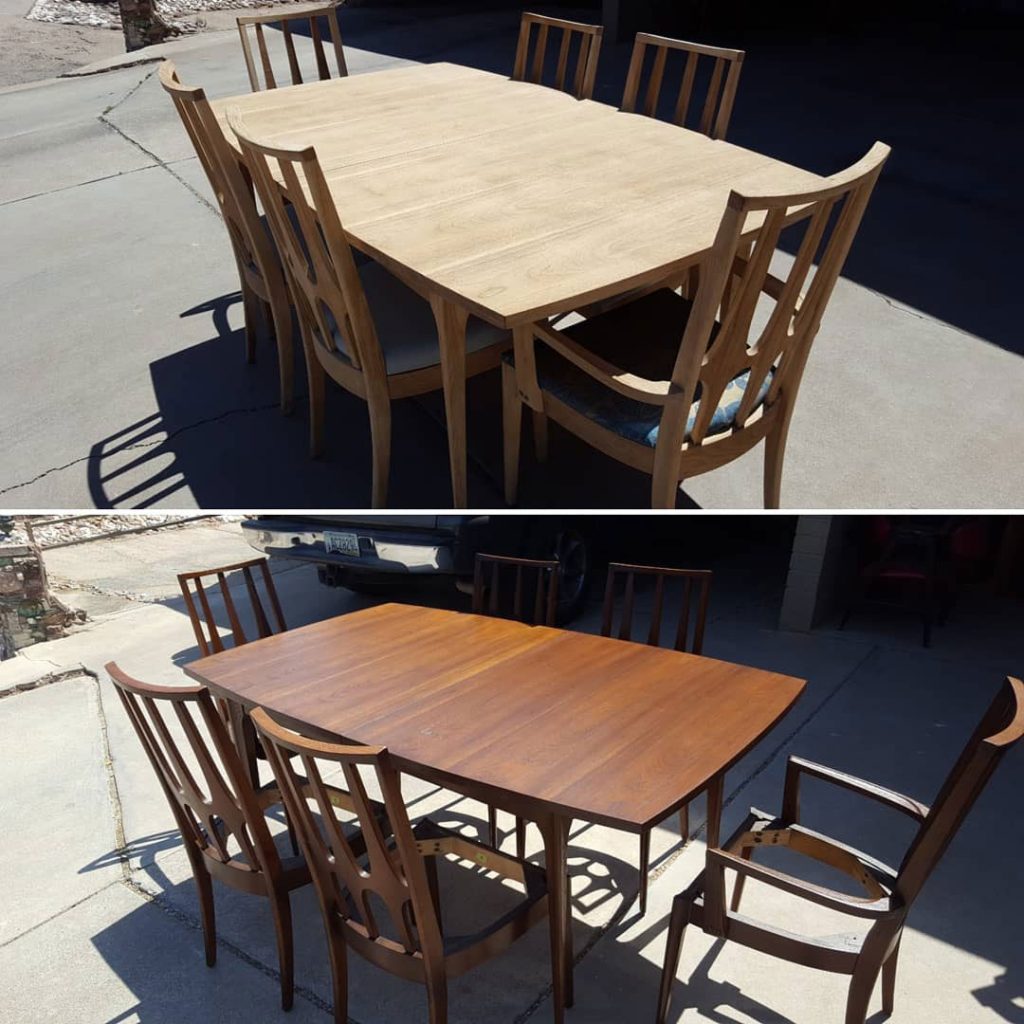
Q: What are some encouragement or words of warning you can give to someone starting their first DIY restoration job on vintage Mid Century Modern furniture?
A: The best advice I can give is to follow the correct process and use the right products. Don’t watch YouTube refinishing videos. Nearly all of them are incorrect and those who claim to be experts are far from it. Many are all too quick to offer terrible advice that usually cause more harm than good. Take advice given in other Mid Century Modern Facebook groups with a grain of salt. While most are well-intentioned, they are usually ill-informed. All of the large, well-known groups will direct you to The Mid Century Modern Furniture Refinishing Resource for the best advice. Always remember; you can achieve a great finish at home. It’s not that difficult, but it takes a little commitment.
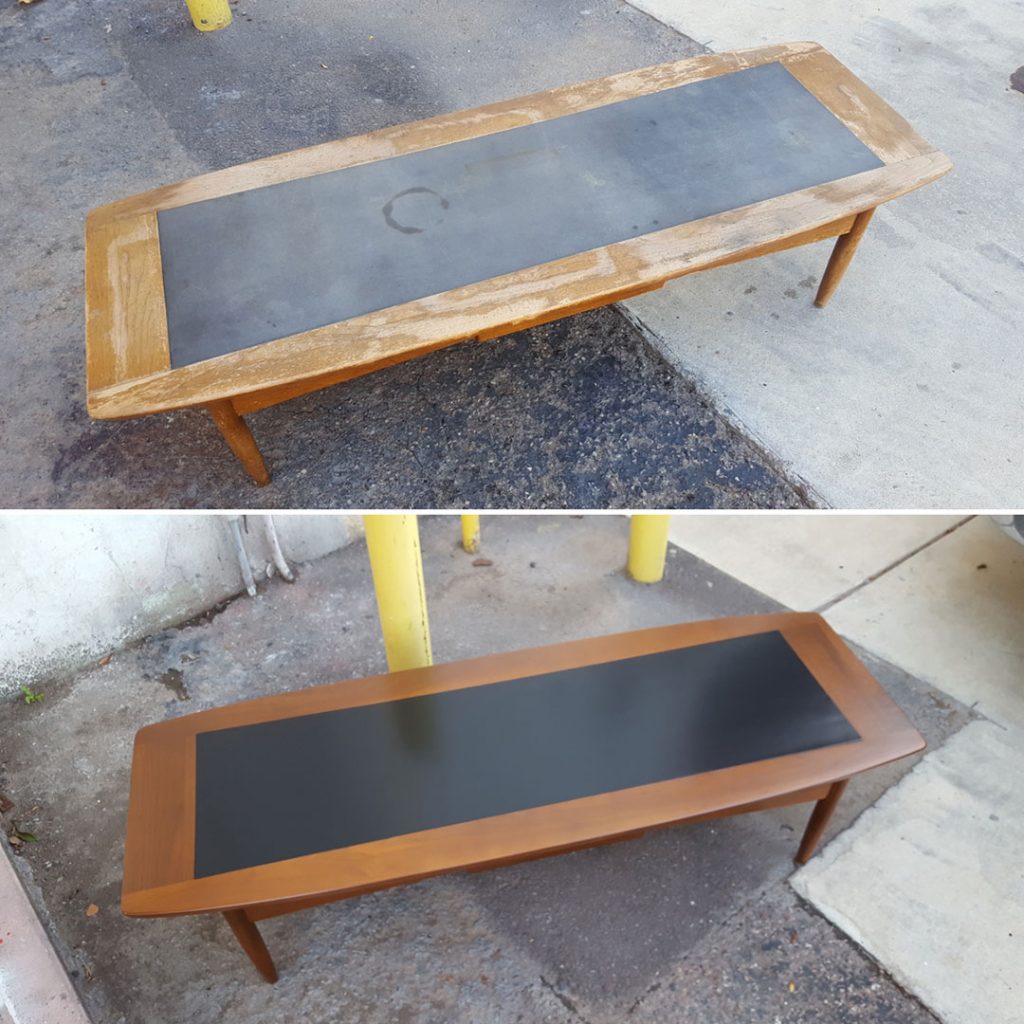
Q: What’s your favorite Mid Century Modern furniture transformation success story?
A: My favorite restorations are family heirloom pieces. Most recently, a client brought in an American of Martinsville coffee table that had been in her childhood home since new. It was certainly well-loved throughout the years! Her mother passed away and she wanted to have the table restored. While the wood was a pretty routine refinish, the large black phenolic (Bakelite) top insert presented a challenge. It needed to be treated a bit differently. I got it all done and scheduled a pick up time. When she saw the table, she was in tears. Tears of joy. She’ll cherish that coffee table forever. That’s why I do this.
If you’ve been inspired to start your own furniture restoration project, head over to The Mid Century Modern Furniture Refinishing Resource to find out if other members have had success restoring pieces similar to your project.
And of course, don’t forget to follow us on Instagram, Facebook, Pinterest and YouTube for more Atomic Ranch articles, house tours, and ideas!

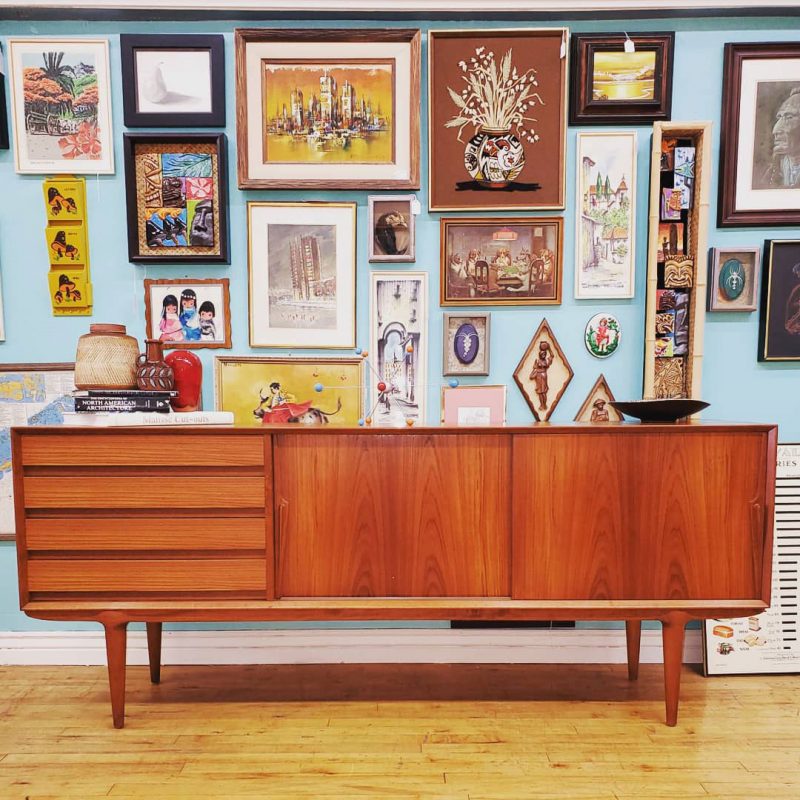









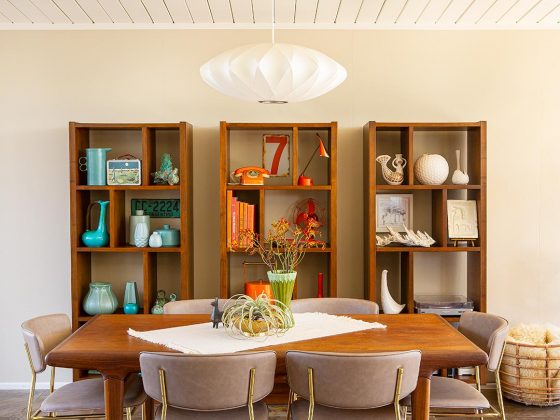




1 comment